Uncovering the Frequent Mop Error That Wears Down Your Grout's Appearance
Although grout is often perceived as a durable and low-maintenance aspect of your flooring, incorrect cleaning practices—particularly the use of unsuitable mops—can severely compromise its visual appeal. Homeowners frequently fall into the trap of thinking their grout is simply aging naturally; however, the true culprit often resides in the cleaning product residues and excess moisture left behind by cleaning tools not specifically designed for grout maintenance. By learning the appropriate cleaning methods, you can protect the vibrancy and structure of your grout, ensuring it continues to be a beautiful component of your home's interior.
Identifying Core Problems: Residue, Water Retention, and Excessive Moisture
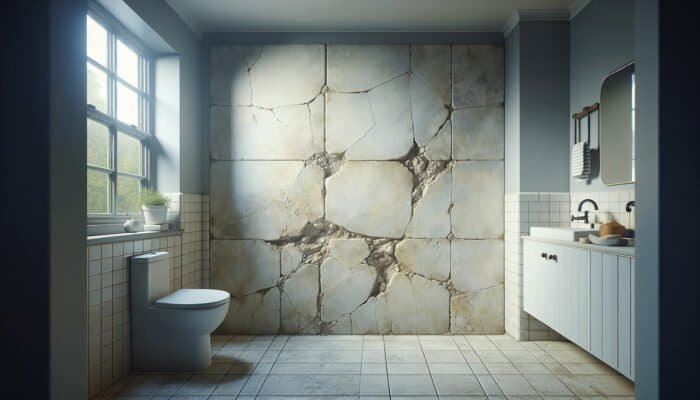
The use of improper mops on your grout can lead to several adverse effects:
- Dirty Water Transfer: Traditional string mops and sponge heads tend to soak up dirt and grime, redistributing this mess back into the grout lines. This process results in unsightly stains and that ever-present dullness that plagues many homes.
- Residual Build-Up: Some mops leave behind detergent residues that seep into porous grout lines, forming a cloudy film that is especially pronounced on lighter tile colors.
- Excessive Moisture: Mops that hold too much water can inundate grout lines, compromising the structural integrity of the grout. This can result in issues such as efflorescence, mold proliferation, or the gradual erosion of the grout itself.
- Sealant Degradation: The use of harsh chemicals with aggressive cleaning tools can break down protective sealants, exposing the grout to stains and discoloration.
Professional Recommendations: Essential Products for Everyday Grout Maintenance
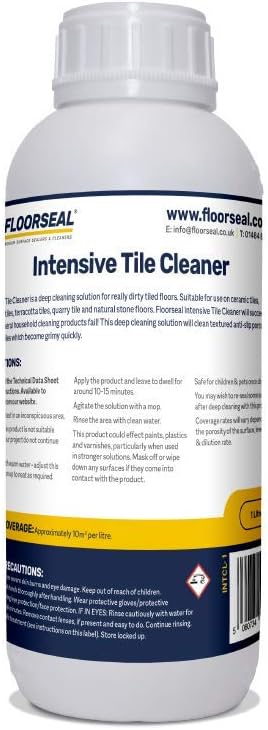
Floorseal Intensive Tile Cleaner
|
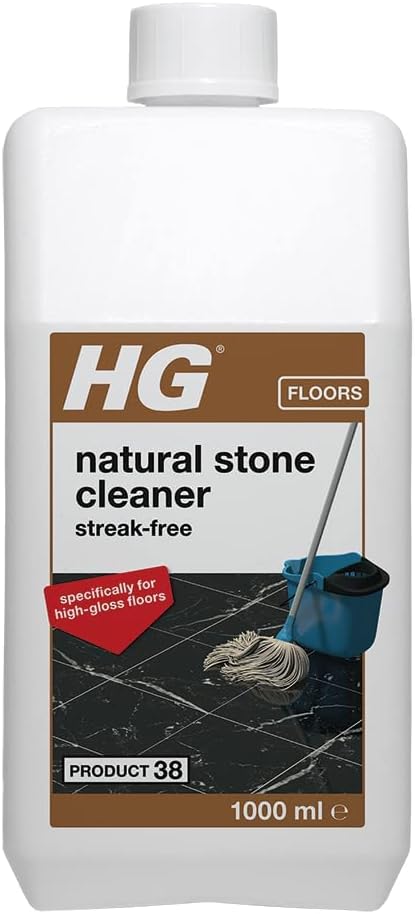
HG Natural Stone Cleaner 38
|
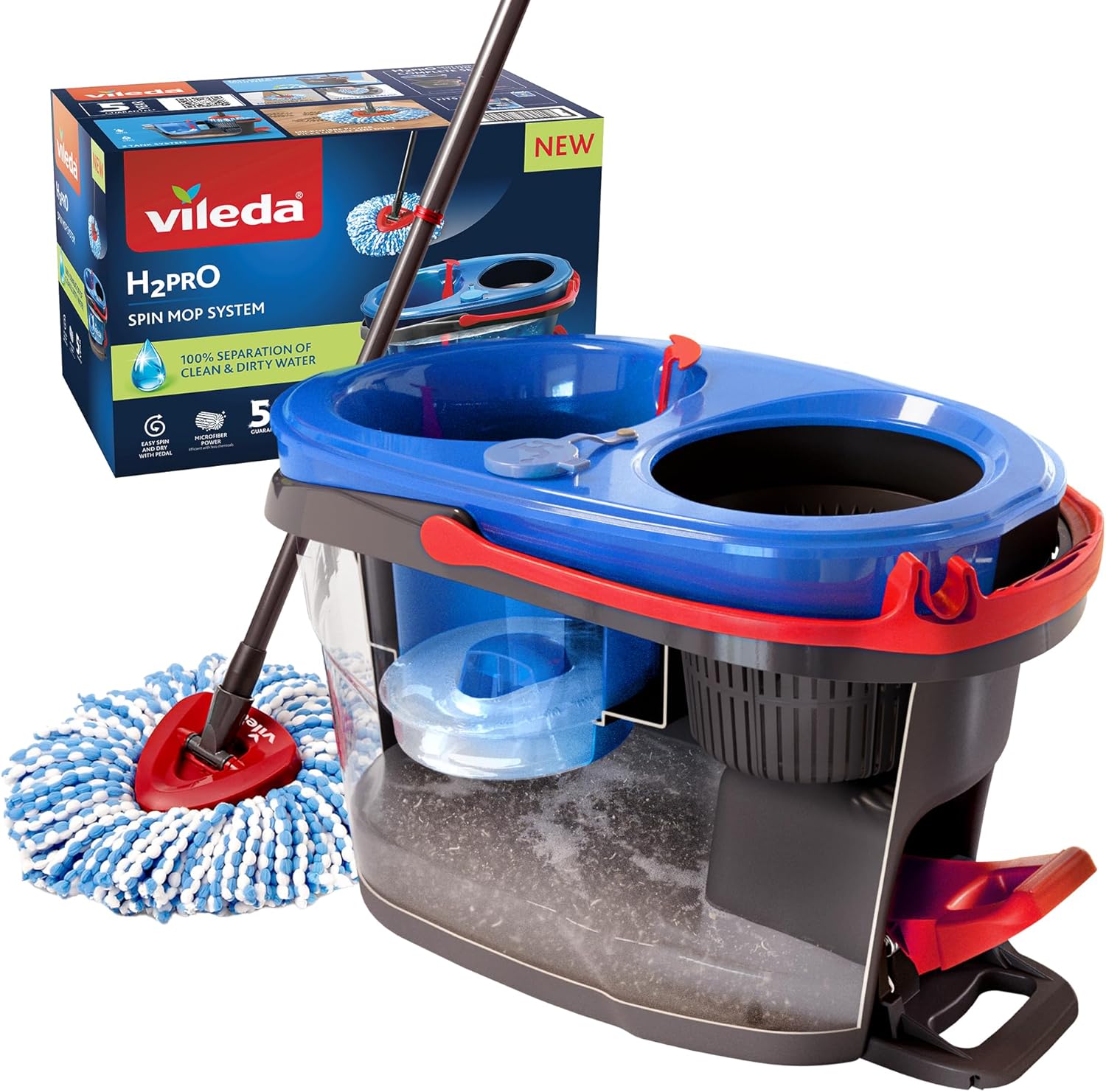
Vileda H2PrO Spin Mop System
|
Practical Strategies for Homeowners to Improve Grout Care
Achieving clean and beautiful floors should not compromise the cleanliness of your grout. To prevent unnecessary fading or staining, consider implementing the following best practices:
- Choose a flat-head microfiber mop that efficiently lifts dirt without oversaturating the flooring.
- Regularly refresh your mop water to avoid transferring dirty water back onto the floor.
- Use pH-balanced cleaners that leave minimal residue, and always thoroughly rinse and dry your floor—grout should never remain wet after cleaning.
- For tough grout lines, hand-cleaning with a soft brush can effectively remove grime without pushing it deeper into the grout.
Essential Cleaning Methods for Sustaining Grout Quality
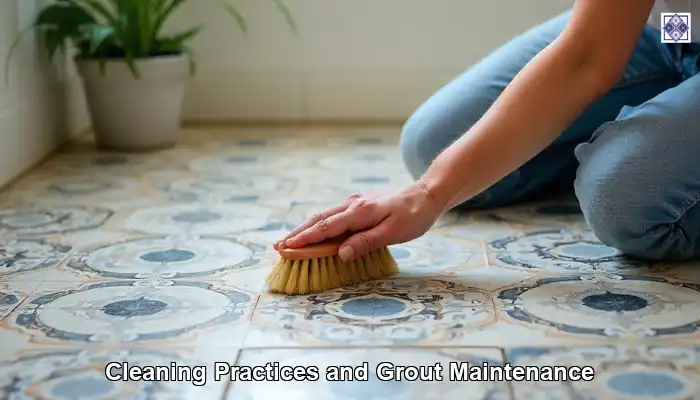
Implementing effective cleaning strategies is crucial for maintaining the aesthetics and durability of grout. Regular upkeep not only preserves the original color and vibrancy but also extends the lifespan of grout, making it essential for homeowners to develop consistent cleaning habits. Establishing a regular cleaning schedule helps prevent the accumulation of grime and dirt, ensuring a consistently attractive appearance.
The Significance of Regular Grout Cleaning for Health and Visual Appeal
Maintaining clean grout is not merely about visual appeal; it is a fundamental aspect of upholding hygiene in your home. Grout lines, particularly in kitchens and bathrooms, are highly vulnerable to dirt, mold, and mildew accumulation. If regular cleaning is overlooked, dirt can build up, dulling the grout's color, which explains why some grout appears faded while others retain their brightness.
Implementing a routine cleaning schedule can help thwart this build-up, preserving the grout's appearance. For example, integrating a quick wipe-down of grout lines with a mild cleaning solution weekly can yield significant benefits. Although this may seem tedious, it ultimately saves time and money by reducing the need for deep cleaning or extensive restoration efforts.
Moreover, regular maintenance allows homeowners to detect stains or discoloration early, making it easier to resolve issues before they become irreversible. This proactive approach to grout care fosters a cleaner, healthier living environment and ensures that your grout remains visually appealing and vibrant.
Utilizing Proper Techniques for Effective Grout Maintenance
Employing the correct cleaning methods is essential for preserving the color and integrity of grout. Many homeowners unknowingly use abrasive cleaning tools or harsh chemical cleaners, which can result in deterioration and fading over time. Instead, it is best to adopt gentler cleaning techniques, utilizing soft brushes or cloths to avoid scratching the grout surface.
For optimal cleaning results, a simple mixture of warm water and vinegar can serve as an effective solution against grime without risking damage to the grout. This natural blend can dissolve dirt and prevent build-up, allowing the grout to retain its luster. Following this with a thorough rinse ensures that no cleaning residues remain, protecting the grout's vibrancy.
Additionally, homeowners should avoid the common pitfall of overusing bleach. Although bleach can effectively whiten, excessive application can weaken the grout's structure, leading to fading and discoloration. Focusing on preventative cleaning strategies can help maintain the grout's original color, enhancing its longevity.
Steering Clear of Harsh Chemicals: Safeguarding Your Grout from Harm
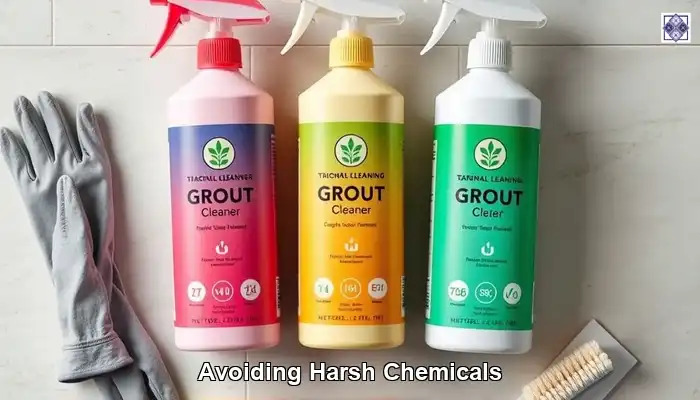
While it may seem convenient to employ harsh chemicals for cleaning tasks, the long-term consequences can be harmful, particularly for grout. Strong cleaning agents can strip away protective sealants that shield grout from moisture and stains, resulting in a faded and worn appearance over time. Many homeowners might be surprised to discover that the cleaning products they rely on could actually contribute to the fading of their grout.
As a safer alternative, consider using eco-friendly cleaning agents or simple homemade solutions that can effectively clean without risking damage to the grout. These options not only maintain the grout's appearance but are also more environmentally friendly. Furthermore, utilizing pH-neutral cleaners can help uphold the grout's integrity, ensuring its vibrancy lasts.
By educating themselves about the components of cleaning products, homeowners can make informed choices about the products they use. Opting for gentler solutions and steering clear of harsh chemicals can significantly address the question of why some grout appears faded while others stay vibrant.
The Vital Role of Grout Sealing for Lasting Quality
Grout sealing is an essential aspect of grout maintenance that homeowners should prioritize. Applying a high-quality grout sealer creates a protective barrier against moisture, stains, and dirt, which can otherwise contribute to fading. This straightforward yet effective practice can significantly enhance the durability of grout, ensuring it remains vibrant and visually appealing over time.
Regular sealing, ideally every six months, bolsters grout’s resistance to daily wear and tear. For those living in humid regions or environments prone to spills, such as kitchens and bathrooms, sealing becomes even more critical. A well-sealed grout line prevents water absorption, substantially reducing the chances of mold and mildew growth while preserving its appearance.
Additionally, sealed grout simplifies the cleaning process. Properly sealed grout is less likely to stain, allowing for more straightforward routine cleanings. By adhering to a regular sealing schedule, homeowners not only tackle fading issues but also streamline their cleaning routines, enabling them to enjoy their beautiful tiled areas for many years.
Embracing Effective Spot Cleaning Strategies for Grout Care
Spot cleaning is a crucial practice that every homeowner should incorporate to uphold the appearance of grout. Addressing stains and spills promptly is vital in preventing permanent discoloration. Common culprits, such as red wine or coffee, can leave lasting marks if not treated immediately.
To effectively manage stains, it is advisable to have suitable cleaning solutions readily available in your home. For example, a mixture of baking soda and water can act as a natural and efficient stain remover. Applying this paste directly onto the stain and allowing it to sit can work wonders in breaking down stubborn grime without harming the grout.
Additionally, using a soft brush or cloth to gently scrub the area can help lift the stain without damaging the grout surface. It is essential to rinse thoroughly with clean water afterward to remove any leftover cleaning solution, ensuring that the grout maintains its original color.
By implementing these spot cleaning techniques, homeowners can keep their grout lines vibrant and effectively address the ongoing concern of why some grout appears faded while others remain vibrant.
Analyzing Various Grout Types and Their Longevity
The selection of grout type for a tiling project can significantly influence the durability and overall aesthetic of tiled surfaces. Understanding the distinctions among various grout types empowers homeowners to make informed decisions that enhance both the lifespan and vibrancy of their grout.
Exploring the Advantages of Epoxy Grout for Moisture-Laden Areas
Epoxy grout is frequently deemed one of the best options for spaces prone to moisture or staining. This type of grout comprises resin and hardener, forming a chemical bond that offers resistance to cracking and fading. The strong nature of epoxy grout makes it a preferred choice for kitchens and bathrooms, where spills and moisture are commonplace.
One of the primary benefits of epoxy grout is its exceptional stain resistance. Unlike traditional cement-based grouts, epoxy grout does not absorb liquids, making it far less likely to discolor over time. This characteristic directly addresses the question of why some grout appears faded while others maintain their vibrancy, allowing homeowners to enjoy lasting color with minimal upkeep.
Moreover, epoxy grout is easier to clean, requiring less effort than its cement-based counterparts. Its smooth finish prevents dirt and grime from sticking, further extending its appearance. For those looking to find a balance between aesthetics and practicality, epoxy grout is an excellent investment for maintaining vibrant tile and grout surfaces.
Recognizing the Challenges Associated with Cement-Based Grout
Cement-based grout, while commonly used, presents specific challenges. Its porous nature makes it vulnerable to moisture absorption, which can lead to staining and fading. In high-traffic zones or areas that experience frequent spills, cement-based grout may begin to show signs of discoloration more quickly than other alternatives, emphasizing the critical inquiry of why some grout appears faded while others remain vibrant.
Additionally, the maintenance requirements for cement-based grout are generally higher. Regular sealing is essential to protect against moisture and staining, which can be tedious for homeowners. If left unsealed, cement-based grout can absorb dirt and spills, resulting in permanent discoloration and an overall dull appearance.
However, there are strategies to mitigate these challenges. Opting for high-quality cement-based grout designed for enhanced durability can make a significant difference. Furthermore, adhering to a strict cleaning and sealing schedule can help maintain the appearance of cement-based grout, allowing homeowners to enjoy the beauty of their tiled surfaces for an extended period.
The Indispensable Role of Grout Sealers in Protecting Your Grout
Grout sealers play an essential role in grout maintenance, providing an extra layer of protection against stains and moisture. Applying a sealer can greatly extend the vibrancy of both epoxy and cement-based grouts, ensuring they remain appealing over time. Sealers function by creating a barrier that repels liquids, preventing them from penetrating the porous surface of the grout.
Regular application of a grout sealer is particularly advantageous for areas subject to frequent spills or high humidity, such as kitchens and bathrooms. By investing in a reliable sealer, homeowners can effectively protect their grout from the daily wear and tear of life. This proactive strategy directly addresses the concern of why some grout appears faded while others retain their vibrancy, as sealed grout is significantly less prone to losing its original color.
When selecting a grout sealer, it is crucial to choose one compatible with the specific type of grout being used. Various options are available on the market, including penetrating sealers that infiltrate the grout and topical sealers that rest on the surface. Understanding these distinctions can assist homeowners in making informed choices about the best methods to safeguard their grout.
Investigating the Unique Benefits of Urethane Grout
Urethane grout offers several unique advantages, making it an excellent option for areas subject to movement and temperature variations. Its inherent flexibility allows it to withstand the stresses associated with expansion and contraction, making it particularly beneficial in climates that experience extreme weather changes.
One of urethane grout's standout features is its resistance to staining. Similar to epoxy grout, urethane does not absorb liquids, making it less likely to fade or discolor over time. Homeowners who choose urethane grout can effectively manage the ongoing concern of why some grout looks faded while others remain vibrant, as this type of grout maintains its appearance despite exposure to spills and stains.
Furthermore, urethane grout is generally more user-friendly than epoxy, making it a popular choice for DIY projects. Its self-leveling properties facilitate a more straightforward application, resulting in a professional finish without requiring extensive skills. For those looking to enhance the longevity and vibrancy of their tiled surfaces, urethane grout presents a compelling option worth considering.
Environmental Influences on Grout Longevity
A range of environmental factors can impact the appearance and durability of grout, making it crucial for homeowners to consider how their surroundings might affect their tiled surfaces. Understanding these influences can lead to more effective maintenance practices and a more vibrant living space.
The Influence of Humidity and Moisture on Grout Appearance
Humidity is a significant factor in grout preservation. Elevated humidity levels can cause grout to absorb moisture, leading to a faded and worn appearance over time. In many areas, particularly during the summer months or in coastal regions, humidity can pose a constant challenge for homeowners striving to maintain their grout's vibrancy.
Excess moisture can also encourage the growth of mold and mildew, further deteriorating the grout’s appearance. To combat this issue, homeowners should consider using dehumidifiers or ensuring proper ventilation in areas prone to high humidity, such as bathrooms and kitchens. By effectively managing moisture levels, it is possible to preserve the grout's original color and address the question of why some grout appears faded while others stay vibrant.
Additionally, ensuring that grout is adequately sealed can prevent moisture absorption. A protective seal can significantly improve the maintenance of clean and vibrant grout lines, ultimately contributing to a healthier living environment.
Understanding the Effects of Sunlight on Grout Durability
Direct sunlight can adversely affect grout, causing it to fade over time due to UV radiation exposure. Homes with large windows or those situated in sunnier regions may find their grout discolored more rapidly than others. The sun’s rays can break down the compounds within the grout, resulting in a loss of vibrancy and an overall worn appearance.
To safeguard grout from the harmful effects of sunlight, homeowners might consider using window treatments such as blinds or curtains to filter sunlight in critical areas. Additionally, selecting tiles and grout colors that are less prone to fading can be an effective strategy. By understanding how sunlight exposure affects grout, homeowners can take proactive steps to maintain their home’s aesthetic appeal.
Moreover, utilizing outdoor tiles designed to withstand UV rays may be a wise choice for those looking to preserve vibrant grout in exterior areas. These tiles typically feature UV-resistant coatings that help prevent fading, ensuring that the beauty of the outdoor space remains intact.
Managing the Impact of Temperature Fluctuations on Grout
Temperature fluctuations can significantly influence the appearance and durability of grout. In regions with substantial temperature variation, grout may expand and contract, potentially causing cracks and discoloration. Homeowners must consider the implications of temperature changes on the longevity of their grout and implement strategies to mitigate these effects.
One effective method to counter temperature fluctuations is to choose flexible grout options, such as urethane, which can better accommodate movement without cracking or fading. Furthermore, employing correct installation techniques can help ensure that grout remains intact even when subjected to extreme temperature variations.
Additionally, maintaining a consistent indoor climate through heating and air conditioning systems can reduce stress on grout. By being mindful of temperature fluctuations, homeowners can proactively support the vibrancy of their grout while addressing the ongoing concerns of why some grout appears faded while others stay vibrant.
Comprehending the Natural Aging Process of Grout
As time progresses, the natural aging process of grout becomes increasingly apparent, leading to fading and deterioration. Understanding the factors that contribute to this wear can empower homeowners to take proactive measures to maintain the vibrancy of their grout.
The Natural Aging Process and Its Effects on Grout
Grout, like any material, undergoes a natural aging process that may result in a loss of color and vibrancy over time. Factors such as exposure to moisture, cleaning techniques, and environmental conditions can accelerate this process. Homeowners may observe that their once-bright grout lines begin to dull after several years, raising the crucial question of why some grout appears faded while others remain vibrant.
Regular maintenance can significantly slow down the aging process. By implementing consistent cleaning routines and sealing schedules, homeowners can help preserve the appearance of their grout and extend its lifespan. Awareness of the inevitable wear that occurs over time empowers homeowners to take proactive steps in maintaining their tiled surfaces.
Moreover, investing in high-quality grout products can yield more durable outcomes. Options like epoxy or urethane grout are engineered to resist fading and discoloration, making them an excellent long-term investment for homeowners aiming to keep their tiled areas looking fresh.
The Impact of Traffic and Usage on Grout Longevity
High-traffic zones within the home, such as hallways, kitchens, and bathrooms, experience greater wear and tear compared to less frequently used spaces. This increased usage can lead to faster fading and discoloration of grout lines, making it essential for homeowners to consider the traffic patterns within their environments.
Regular cleaning and maintenance become even more crucial in these high-traffic areas. Implementing a more stringent cleaning regimen can help mitigate the effects of daily use while preserving the original color of grout. Additionally, utilizing mats or runners in high-traffic zones can aid in reducing wear on grout lines, effectively prolonging their vibrancy.
The choice of grout material also plays a pivotal role in determining how well it withstands heavy usage. Homeowners should look into opting for more durable materials, such as epoxy or urethane, which are specifically designed to resist staining and fading, thereby offering a robust solution for high-traffic areas.
The Significance of Ongoing Maintenance Over Time
Continuous maintenance is vital for slowing the aging process of grout. By establishing a regimen that includes cleaning and sealing, homeowners can significantly enhance the longevity of their grout. As grout ages, it may require deeper cleaning methods to eliminate stubborn stains and prevent permanent discoloration.
In addition to routine cleaning, periodic assessments of grout condition can aid homeowners in identifying and addressing issues early on. Recognizing areas that require extra attention can save time and money in the long run. By taking proactive measures to maintain grout, homeowners can effectively address the issue of why some grout appears faded while others remain vibrant.
Investing in professional cleaning or restoration services may also be beneficial for older grout lines that have significantly dulled over time. These services can restore the original vibrancy of grout without needing costly replacements.
The Accelerated Deterioration Caused by Harsh Chemicals
Exposure to harsh chemicals can greatly accelerate the deterioration of grout and contribute to fading. Many cleaning agents, particularly those containing bleach or ammonia, can damage the grout surface over time, resulting in a loss of vibrancy. Homeowners should exercise caution when selecting cleaning products and opt for gentler alternatives that do not compromise the integrity of their grout.
Understanding how to effectively clean grout without resorting to harsh chemicals is essential. Homeowners can achieve excellent results using natural solutions, such as vinegar and baking soda, to preserve the appearance of grout for years to come.
By taking the time to educate themselves about the impact of chemicals on grout, homeowners can avoid common pitfalls and ensure their grout remains as vibrant as the day it was installed, directly addressing the ongoing question of why some grout looks faded while others stay vibrant.
The Influence of Environmental Factors on Grout Longevity
Environmental elements, including humidity, temperature, and sunlight exposure, can all contribute to the wear and fading of grout. Homeowners must take these factors into account when selecting and maintaining grout, as they significantly influence its durability.
Choosing the right materials can help mitigate the risks associated with environmental factors. For instance, opting for tiles and grout intended for outdoor use can enhance durability in areas exposed to severe weather conditions.
In addition to material selection, establishing a consistent maintenance routine that considers environmental influences can help preserve the vibrancy of grout. Homeowners who understand how these factors impact grout longevity can take proactive measures to effectively maintain their tiled spaces.
The Indispensable Importance of Quality Grout Installation
The caliber of grout installation can have a profound impact on the durability and appearance of tiled surfaces. Understanding the key components of proper installation can assist homeowners in ensuring that their grout remains vibrant for many years.
Contrasting Professional Installation with DIY Methods
While many homeowners may lean toward a DIY approach for grout installation, hiring a professional is likely to yield far superior results. Professionals possess the expertise necessary to ensure that grout is mixed, applied, and cured correctly, resulting in increased durability and a more vibrant finish.
One significant advantage of professional installation is the assurance of quality. Skilled tradespeople understand the nuances involved in grout application and can avoid common mistakes that may lead to complications later on. For example, improperly mixed grout can result in inadequate adhesion, negatively affecting its lifespan and color.
By choosing professional assistance, homeowners can effectively address the query of why some grout appears faded while others remain vibrant. A professionally installed grout solution is likely to resist fading and require less maintenance over time, preserving its lively appearance.
Recognizing the Importance of Proper Mixing and Application Techniques
The techniques used for mixing and applying grout during installation are critical for achieving lasting results. Proper mixing ensures that the grout reaches the correct consistency and strength, while careful application prevents air bubbles and guarantees even distribution.
Homeowners should meticulously follow the manufacturer's instructions when mixing grout. Using the appropriate water-to-grout ratio is essential for optimal performance and durability. Additionally, allowing grout to set for the recommended duration before exposure to moisture can significantly affect its long-term appearance.
During the application process, utilizing suitable tools and methods can make a substantial difference. A consistent application technique, such as using a grout float for even distribution, helps prevent uneven color and fading over time. By prioritizing these details, homeowners can enhance the longevity and vibrancy of their grout lines.
The Critical Role of Proper Curing in Grout Installation
The curing process is often neglected but plays a vital role in the durability of grout. Allowing grout to cure properly enables it to achieve maximum strength and longevity. Homeowners should understand that rushing the curing process can lead to issues such as cracking, discoloration, and overall degradation of the grout.
To ensure optimal curing, it is essential to keep the grout dry and avoid moisture exposure for at least 72 hours following installation. This may require careful planning and monitoring, especially in areas prone to high humidity.
By recognizing the importance of the curing process, homeowners can effectively address fading issues related to grout. Proper curing results in a robust and vibrant final appearance, ensuring that the grout retains its charm for years to come.
Investigating Renovation and Restoration Techniques for Grout
In situations where grout has already faded or become discolored, homeowners have various renovation and restoration options available to rejuvenate their tiled spaces. Understanding these alternatives can facilitate the revival of grout lines’ vibrancy and enhance the overall appearance of tiled areas.
Applying Grout Color Restoration Techniques
One effective approach to addressing faded grout is through color restoration. Various specialized products on the market can rejuvenate grout lines, restoring their original hue and vibrancy. These products typically penetrate the grout surface and revitalize its color without necessitating replacement.
Using grout color restoration products is usually straightforward, enabling homeowners to refresh their tiled spaces without extensive renovations. Adhering to the manufacturer's guidelines can yield impressive results, effectively addressing the question of why some grout appears faded while others remain vibrant.
In addition to commercial solutions, DIY options exist, such as using a grout pen or marker to touch up faded areas. This method may require time and precision but can serve as a cost-effective means of restoring the vibrancy of grout lines.
Regrouting: A Practical Solution for Severe Discoloration
In cases of significant fading or discoloration, regrouting may be the most effective remedy. Regrouting involves removing the old grout and replacing it with new material, providing a fresh start for tiled surfaces. This process can dramatically refresh the look of grout lines, making them appear vibrant and new.
Homeowners should contemplate regrouting when existing grout is severely faded or damaged. Hiring a professional for this task ensures that the new grout is applied correctly and efficiently, addressing both durability and aesthetics.
Regrouting can also present an opportunity to switch to a more durable grout type, such as epoxy or urethane, further enhancing the longevity and vibrancy of the tile surface. Ultimately, this approach can be a wise investment for homeowners eager to revitalize their spaces.
Considering Both Tile and Grout Replacement for a Fresh Aesthetic
In scenarios where grout deterioration is severe, it may be necessary to consider replacing both the tiles and the grout. This option, while potentially more costly, offers a comprehensive solution for restoring a space’s beauty. Replacing both tiles and grout allows homeowners to select materials that may be more resistant to fading and staining.
When opting for tile and grout replacement, it is crucial to choose high-quality materials designed for durability. Homeowners should collaborate with professionals to ensure that the installation is executed correctly, resulting in a vibrant and long-lasting finish.
While tile and grout replacement may seem like a significant undertaking, the results can be transformative, leading to a refreshed and elegant space. Addressing fading issues through replacement can ultimately yield greater satisfaction with the home’s overall aesthetic.
Applying Surface Polishing Techniques for Grout Improvement
Another effective strategy for enhancing the appearance of grout and tiles is through surface polishing techniques. Polishing can help eliminate surface stains and restore shine, resulting in a more vibrant look. Many homeowners may be surprised to learn that professional polishing services can significantly enhance the overall aesthetic of their tiled surfaces.
When considering surface polishing, it is essential to choose a service that employs appropriate techniques tailored to the specific type of tiles and grout in your home. Proper polishing not only improves appearance but also guards against future staining and fading, reinforcing the overall integrity of the grout lines.
By investing in surface polishing, homeowners can directly tackle fading issues and achieve a refreshed look for their tiled spaces, addressing the enduring question of why some grout appears faded while others remain vibrant.
Sealant Application and Ongoing Care for Grout Longevity
Lastly, applying sealants to both tiles and grout can significantly enhance their longevity and aesthetic appeal. Sealants create an additional protective layer against stains and moisture, ensuring that the grout remains vibrant and intact. Regular maintenance of sealants is also essential to ensure their effectiveness.
Homeowners should establish a sealing schedule based on the specific conditions of their homes. High-traffic areas or spaces prone to moisture may require more frequent sealing to maintain vibrant grout lines. By investing in this preventative measure, homeowners can enjoy the benefits of preserved grout for years to come.
In conclusion, understanding the renovation and restoration options available can empower homeowners to effectively address fading grout issues. By adopting appropriate strategies, it is possible to maintain the beauty and vibrancy of tiled spaces throughout the home.
Frequently Asked Questions About Grout Care
What Are the Primary Causes of Grout Fading Over Time?
Grout fading is a result of various factors, including exposure to hard water, cleaning practices, environmental conditions, and the natural aging process.
Can Faded Grout Be Restored Without Replacement?
Yes, faded grout can often be revitalized using specialized color restoration products or by regrouting the affected areas.
How Often Should I Seal My Grout?
It is recommended to seal grout every six months to maintain its appearance and protect it from stains and moisture.
What Cleaning Method Works Best for Grout?
Gentle cleaning methods employing natural solutions, such as vinegar and baking soda, are effective for maintaining grout without causing damage.
Does Humidity Impact Grout's Appearance?
Yes, high humidity can lead to moisture absorption within grout, resulting in fading and encouraging mold growth.
Is Epoxy Grout Superior to Cement-Based Grout?
Yes, epoxy grout offers better resistance to staining and fading compared to traditional cement-based grout, making it a more durable choice.
How Can Sunlight Exposure Affect My Grout?
Direct sunlight can fade grout over time due to UV radiation, causing discoloration and a dull appearance.
What Are the Advantages of Hiring a Professional for Grout Installation?
Professional grout installation ensures proper mixing, application, and curing, resulting in improved durability and a more vibrant finish.
Can I Use Bleach to Clean My Grout?
While bleach can be effective, overuse can damage grout and lead to fading. It is advisable to select gentler cleaning solutions.
What Materials Are Best for High-Traffic Areas?
Durable materials such as epoxy or urethane grout are recommended for high-traffic areas, as they resist staining and fading.
The article Why Do Some Grout Look Faded While Others Are Still Vibrant was first found on https://london-stone.co.uk
The article Grout Fading: Why Some Remain Vibrant While Others Don’t appeared first on https://fabritec.org
The Article Grout Fading: Reasons for Vibrancy Differences Explained Was Found On https://limitsofstrategy.com

